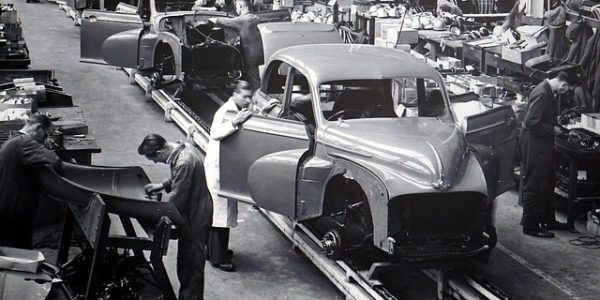Manufacturing has long been the backbone of the U.S. economy. A healthy manufacturing sector lends itself to a healthy national economy. Of course, unemployment in manufacturing has been on the rise for some time. There’s no denying the disappearance of manufacturing jobs, but the reason for the loss of jobs is often debated. Some credit offshoring, while others blame trade deals, and still others fault increased mechanization. It may even just be increased productivity — manufacturing production is at a new high, but that doesn’t mean more workers have jobs.
It’s hard to attribute job loss in manufacturing to any single factor. Decreased employment in manufacturing is the result of a combination of factors. A slight uptick in manufacturing jobs and a recent push for reshoring have cultivated a sense of optimism, but will manufacturing jobs return to the U.S.?
Manufacturing jobs in the U.S. disappear
According to the U.S. Department of Labor: Bureau of Labor Statistics, over 19 million people worked in manufacturing in the late 1970s. Today, the manufacturing industry employs just over 12 million workers. Manufacturing employment mostly hovered above 17 million employees until 2000. Over the past 15 years, however, employment in manufacturing has been on a downward trajectory, dipping below 12 million employees in 2010. America has seen slight growth in manufacturing jobs over the last five years, which is an encouraging sign for some.
Is automation to blame for manufacturing unemployment?
Again, it’s not reasonable to attribute the decrease in manufacturing employment to any one factor. It is reasonable, however, to say that industrial automation – such as motion control systems – has contributed to the decrease in jobs. Mechanization is responsible for about half of manufacturing unemployment in the United States. While certainly not the sole cause, it’s clear that automation plays in important role in employment in the manufacturing sector.
As automation improves, and becomes more affordable, it’s conceivable that more manufacturing jobs will disappear due to mechanization. This becomes more likely with predictions about the future market for industrial robots.
Will reshoring bring manufacturing jobs back to America?
There’s good reason for the optimism surrounding manufacturing employment. An increased demand for American made goods and reshoring – or bringing production back to the Unites States from overseas – is certainly good for U.S. manufacturing. But will reshoring create more jobs?
The current state of manufacturing can give us some insight to this question. Manufacturing in the United States remains strong despite fewer manufacturing jobs. The U.S.manufacturing output is over $2 trillion, which is larger than it’s ever been before. In 2012, the U.S. accounted for 25% of the world’s total manufacturing exports, the same percentage as in 1982. In other words, manufacturing in America is just as strong, if not stronger, today than it was before manufacturing jobs disappeared.
Automation makes reshoring more appealing to manufacturers, and bringing manufacturing back to the United States will certainly improve the economy. But that doesn’t necessarily mean that we will see a boon to manufacturing employment. U.S. manufacturing, of course, creates more jobs than offshoring, but it’s not reasonable to think that we will ever see the same employment numbers in U.S. manufacturign that we’ve had in the past.
Industrial automation is the obvious choice for manufacturers, and automation reduces the need for human workers. Make sure that your industrial motion control system is running as smoothly as it should. Contact us today for any of your Indramat needs!
